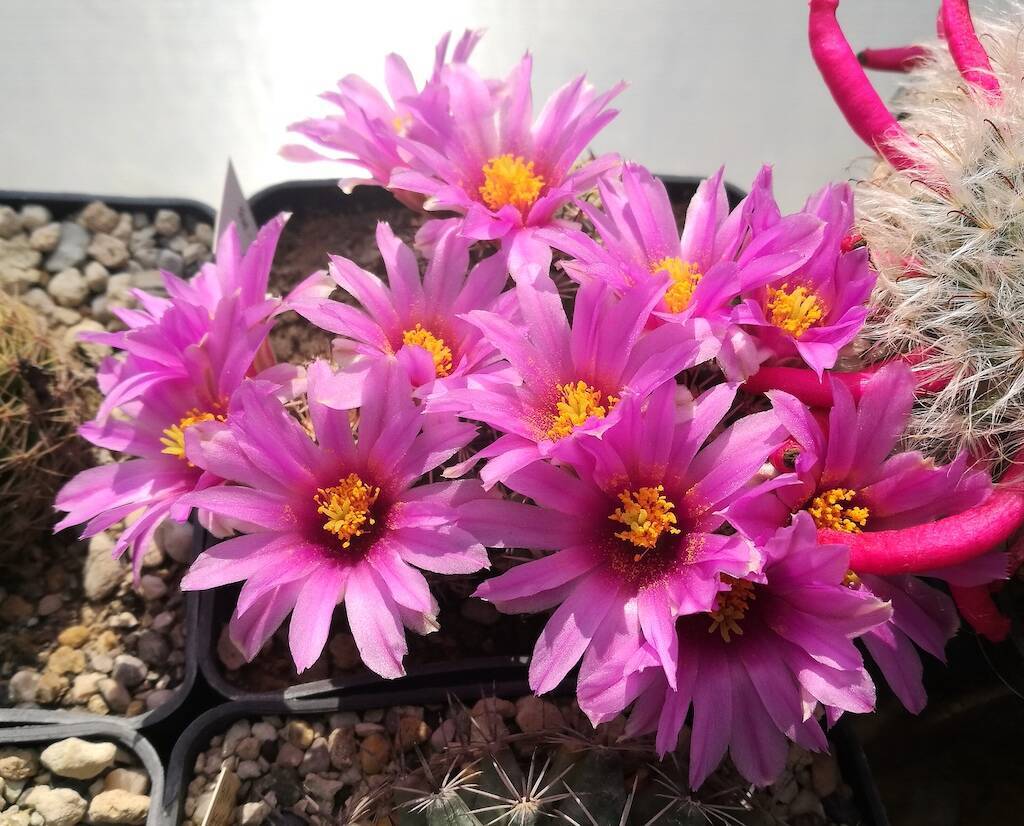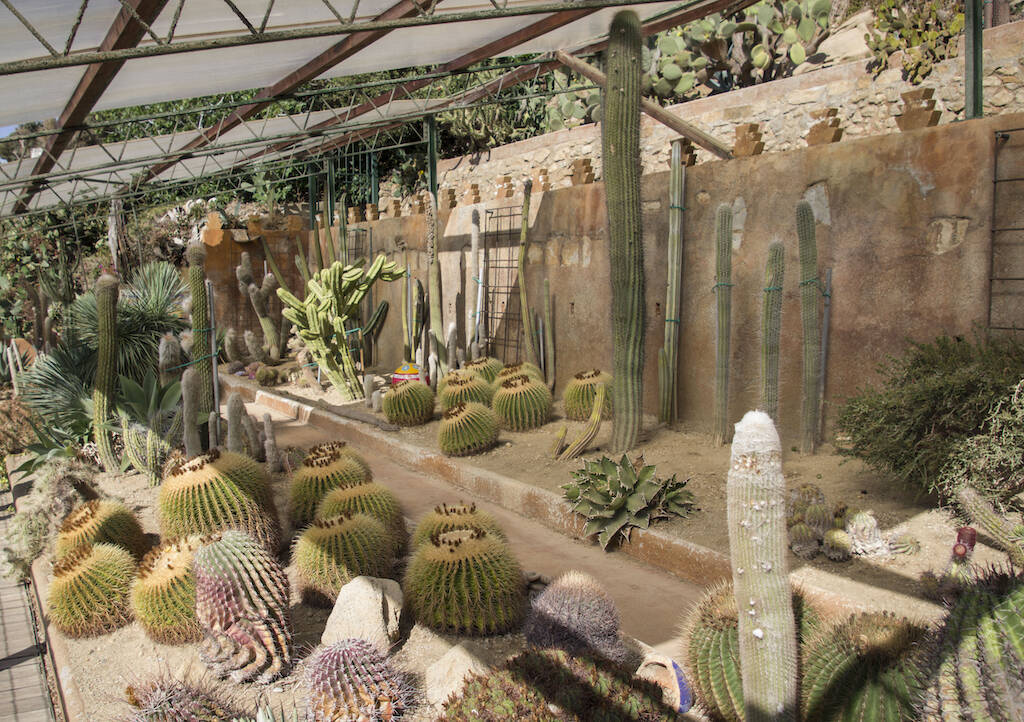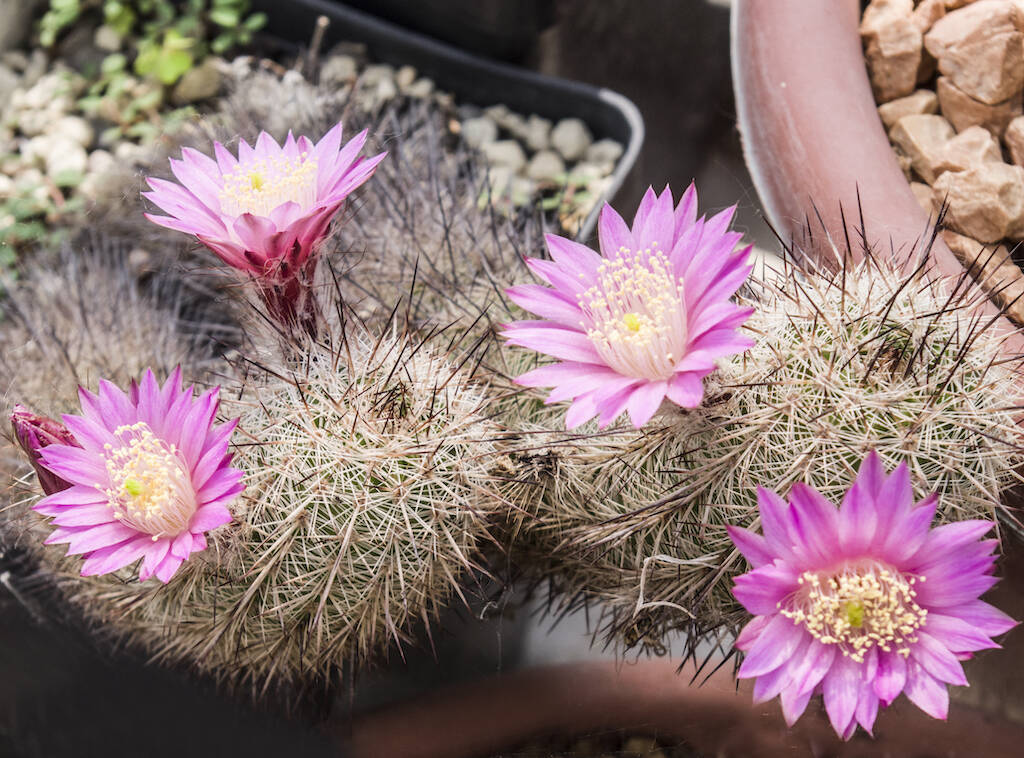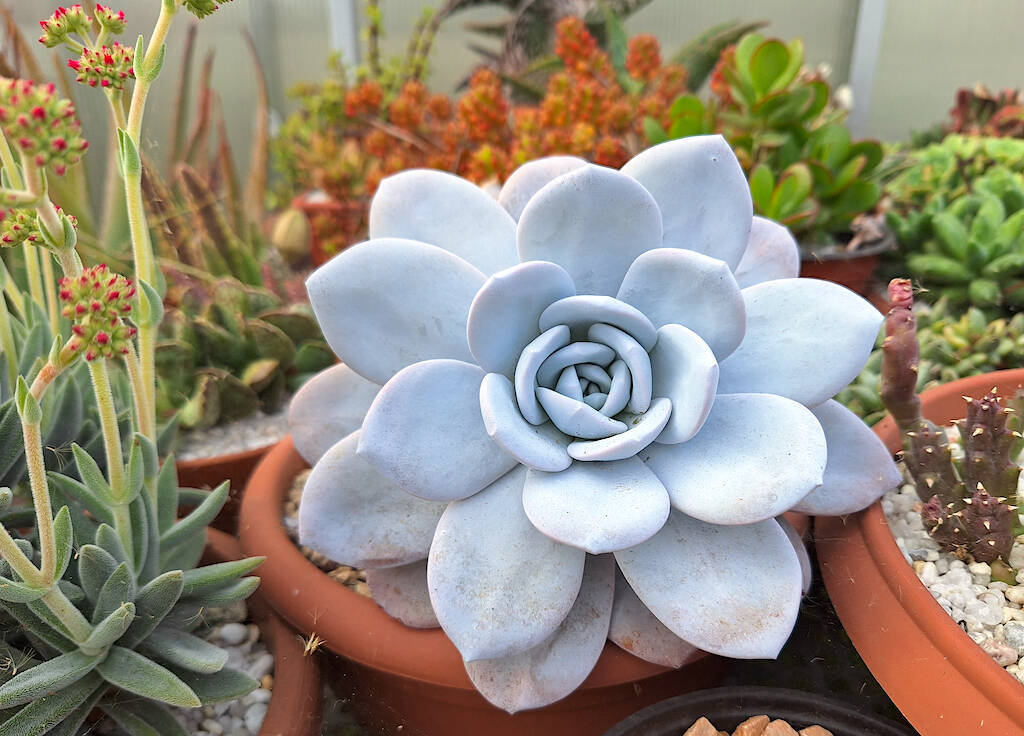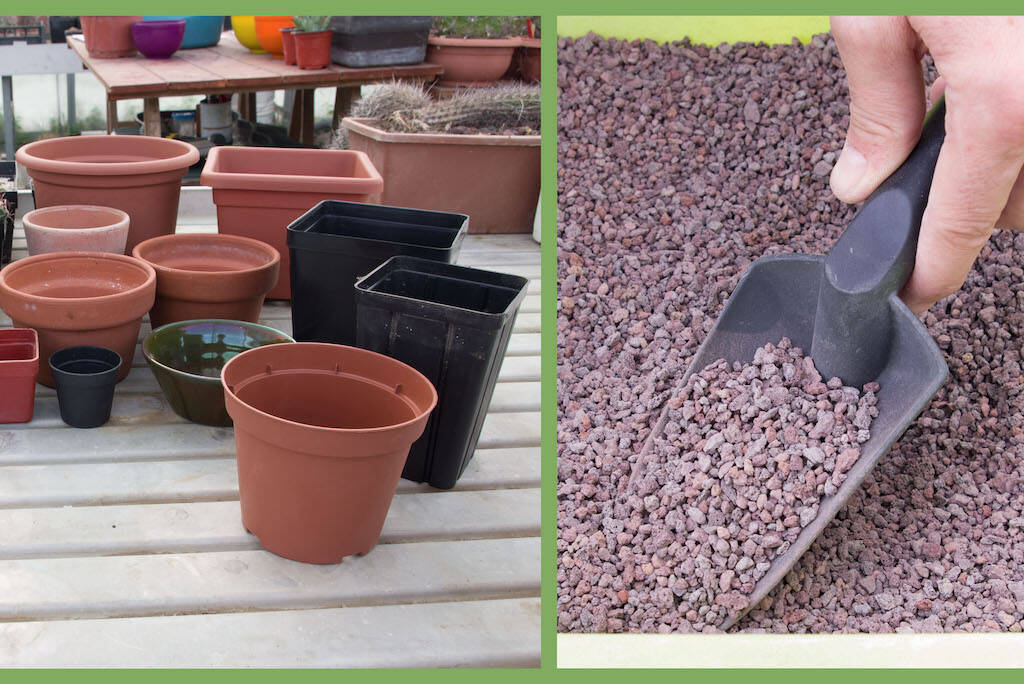Mammillaria is a very widespread genus of cacti and appreciated by succulent plant growers.
These cacti are easily recognizable by the splendid crown blooms around the apical part of the stem, which can be small or medium in size. These are cacti suitable for expert growers as well as novice growers. Some species, in fact, require a fair amount of experience (among these, Mammillaria luethyi, Mammillaria pectinifera, Mammillaria solisoides, Mammillaria lasiacantha, Mammillaria senilis, Mammillaria herrerae); other species are suitable for anyone (among these, Mammillaria elongata, Mammillaria bombycina, Mammillaria prolifera, Mammillaria polythele, Mammillaria uncinata, Mammillaria bocasana, Mammillaria perbella, Mammillaria mystax). The stems can appear globose, often clustered, very harmonious and in some cases covered with thick hair or very white thorns. (…)


